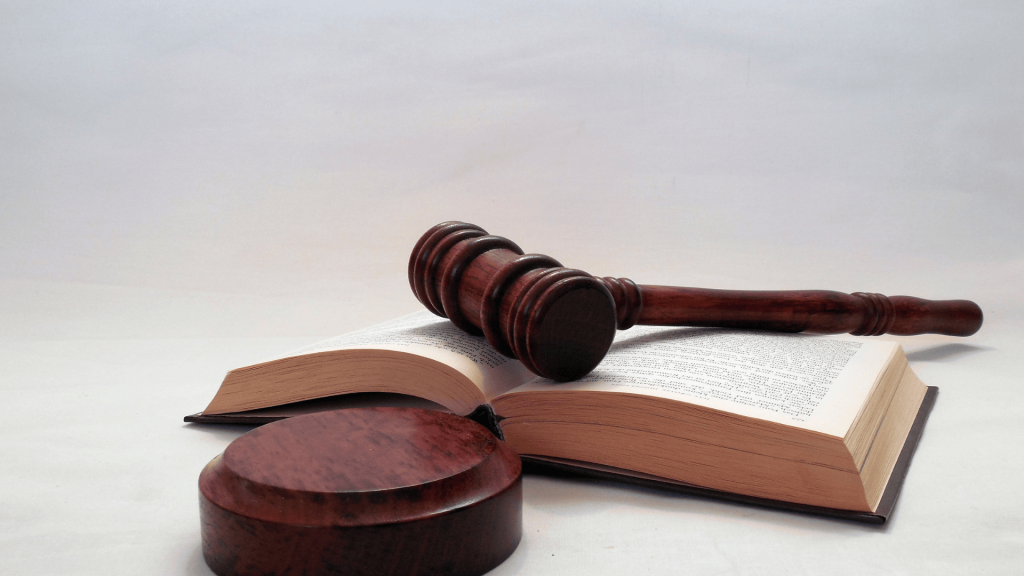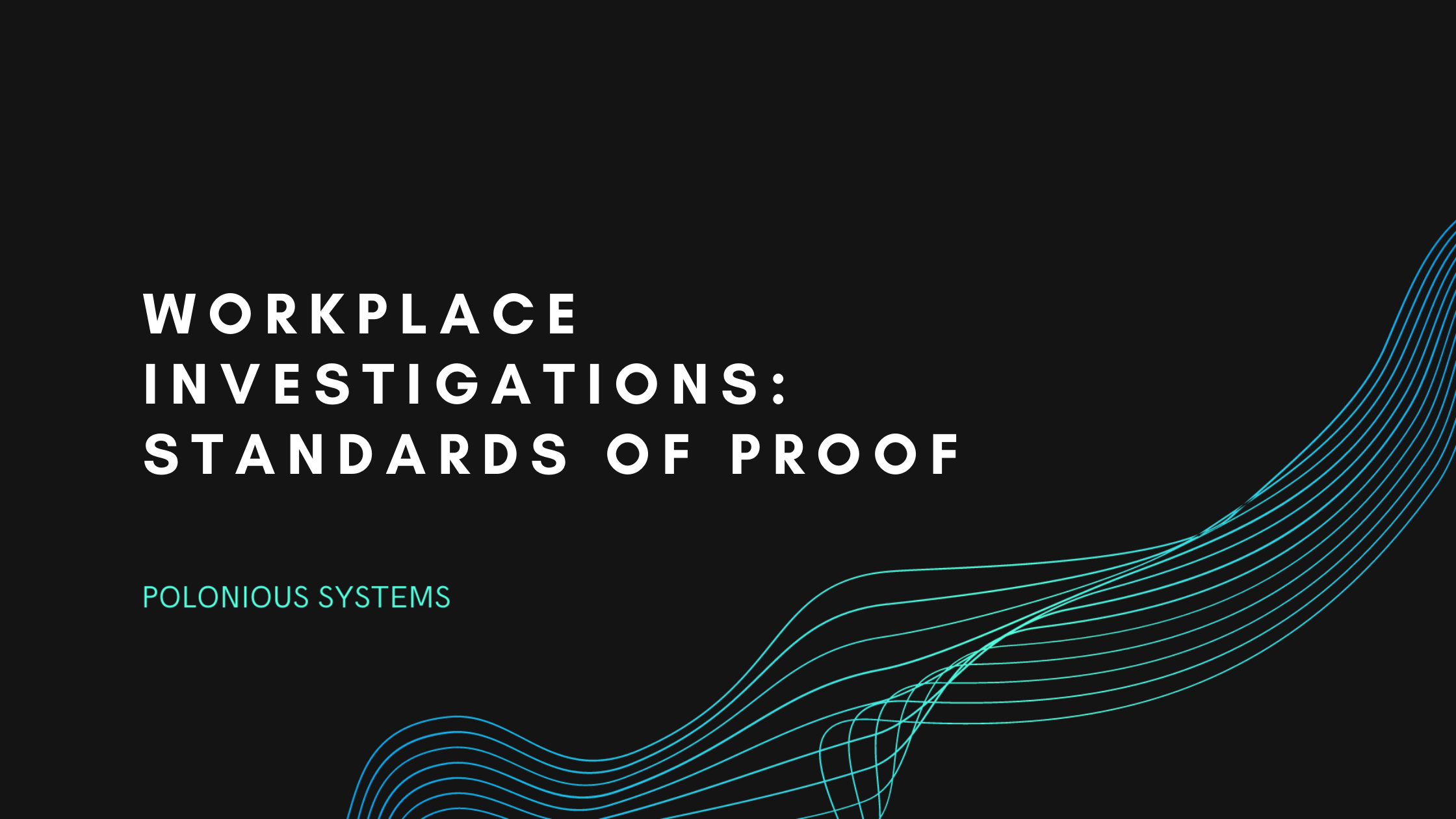An investigation of a complaint of discrimination or harassment should be as comprehensive and conclusive as reasonably possible – it must consider all relevant facts. It is important to demonstrate that the internal investigation was thorough and afforded natural justice, if legal action ensues. Understanding the Rules of Evidence in Workplace Investigations lays a critical foundation for any successful investigation.
Any workplace investigation should be conducted having regard to the possibility that the matter could end up in a tribunal, such as the Fair Work Commission in Australia, the U.S. Department of Labor or in the court system. Non-compliance with procedural fairness can put investigators under risk under regulations such as the Equality Act 2010 in the UK and workplace laws outlined by the Department of Labor (DOL).
In the event that this occurs, any investigation which has failed to observe basic rules of evidence may put companies, employees and investigators at risk.
Generally, compliance with procedural fairness requires that:
- a thorough, confidential investigation is carried out and all relevant evidence (from any witnesses and documents) obtained
- the subject of the complaint is given an opportunity to respond to the allegation and any evidence found
- concrete evidence is used to substantiate any claim
The importance of following the rules of evidence in workplace investigations cannot be understated due to the potential risks involved. There are more considerations regarding procedural fairness which we have covered here: Better Workplace Investigations: 10 Steps to Ensure Procedural Fairness.
This guide will help you understand the Rules of Evidence and how this applies to workplace investigations.
This comprehensive guide will understand:
- Rules of Evidence in Workplace Investigations
- Obtaining relevant evidence
- Running robust Interviews
- Balance of Probabilities
Rules of Evidence in Workplace Investigations
The laws of evidence prescribe standards to which a fact must be proved:
- in civil proceedings, facts must be proved on the balance of probabilities; and
- in criminal proceedings, facts must be proved beyond reasonable doubt.
The rules of evidence govern what information is able to be placed before a decision maker for determination of an issue. These rules influence how a party goes about proving its case. Parties seek to persuade the decision maker of a fact by producing evidence. In doing so, a party should consider three issues:
- how to present evidence of the fact;
- whether the evidence is admissible or relevant (that is, whether the decision maker will permit it to be given); and
- the weight of the evidence (that is, how much importance the decision maker will give to it in reaching its decision).

Obtaining Evidence
It is important that the investigator obtains as much relevant evidence as possible to help prove the case.
Evidence may include:
- physical evidence such as documents, stolen items, etc.
- photographs and fingerprints at a crime scene
- medical evidence
In a workplace investigation, evidence may involve documents of the following kinds:
- wage slips regarding underpaying wages or entitlements of employees
- receipts or ledgers regarding deductions, cashbacks or requirements to spend money of employees
- email communisations regarding unfair dismissal or bullying of a worker
- witness statements regarding workplace harassment
When obtaining and evaluating evidence, the investigator must be able to recognise what constitutes relevant evidence versus irrelevant evidence. For example, evidence of someone’s character is irrelevant during a fact-finding investigation, though similar type behaviour or a tendency to behave in a certain way may be – provided it is sufficiently similar to the matters currently under investigation and can be assessed as relevant.
It is important to review all of the evidence collected and have an open mind to what the evidence is telling you. Take away any preconceived ideas, ‘gut feels’ or biases when assessing the evidence you collected, and make sure you have been thorough and open to all avenues of inquiry. This will ensure you have collected sufficiently reliable and relevant evidence to make a finding with.
Balance of Probabilities versus Reasonable Doubt
When a decision maker decides whether a matter has been proven, it does so according to a benchmark which must be reached. This is generally known as the standard of proof. Decision makers must apply the appropriate standard of proof when deciding whether a matter has been proven. The decision maker must decide whether it is satisfied to the requisite degree that the matter alleged has been proven.
In civil matters, the decision-maker must be satisfied that the allegation has been proven on the balance of probabilities, while criminal matters require that the court be satisfied beyond a reasonable doubt.
The required standard of proof is based more upon the type of case than where or how it is raised. For example, cases heard in civil courts also adhere to the balance of probabilities rather than the higher standard of ‘beyond reasonable doubt’ as found in criminal matters. Meanwhile, a decision maker may determine that a serious or sensitive matter should be held to a higher standard of proof than a simple balance of probabilities. However, balance of probabilities is the accepted standard for all non-criminal matters.
It is important to note, though, how the respondent to a complaint may react to a determination made on the balance of probabilities. Most people are familiar with the ‘beyond reasonable doubt’ standard, particularly when facing serious allegations. You may conclude on the balance of probabilities that an event did occur, or was more likely to have occurred, despite the respondent having an explanation or some other kind of ‘doubt’ they can place on the case.
You may even have a strong case in this regard but, especially with more serious cases, the respondent may believe that they have generated doubt and thus feel upset if the allegations are confirmed. Thus, it is important to clearly explain the standard of proof and the reasons for your decision, when communicating it to the respondent and the complainant.
How Polonious can Help
Evidence collection and management is a critical element of any successful investigation. Using the Polonious Case Management Software ensures a consistent process that is procedurally fair for all parties, while recording all actions and decisions to ensure all evidence is documented and auditable. Everything recorded in Polonious is then available in detailed reporting for identifying trends and problem areas.
Polonious’ ISO27001 certified security ensures your evidence and case files are stored securely, while our detailed security configuration ensures you can keep employees fully anonymous, or known only to specific individuals, depending on the level of anonymity requested.
Let's Get Started
Interested in learning more about how Polonious can help?
Get a free consultation or demo with one of our experts




